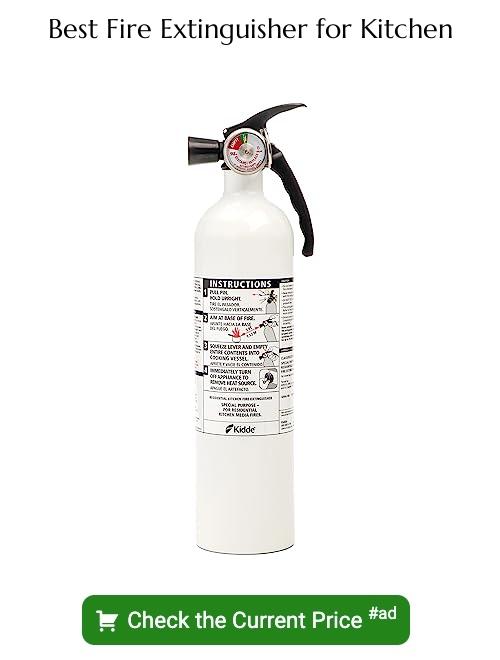Last updated on
Discover essential steps to take after experiencing a small kitchen fire, ensuring safety and preventing further damage in your home.
A small kitchen fire can be a terrifying experience for anyone. Even if it’s quickly put out, the aftermath can leave you feeling overwhelmed and unsure of what to do next.
From smoke damage to lingering odors, there are several things to consider when it comes to cleaning up after a kitchen fire. In this article, we’ll discuss some essential steps you should take after experiencing a small kitchen fire so that you can get your home back to normal as soon as possible.
So let’s dive in!
What's Inside
Ensuring Safety First
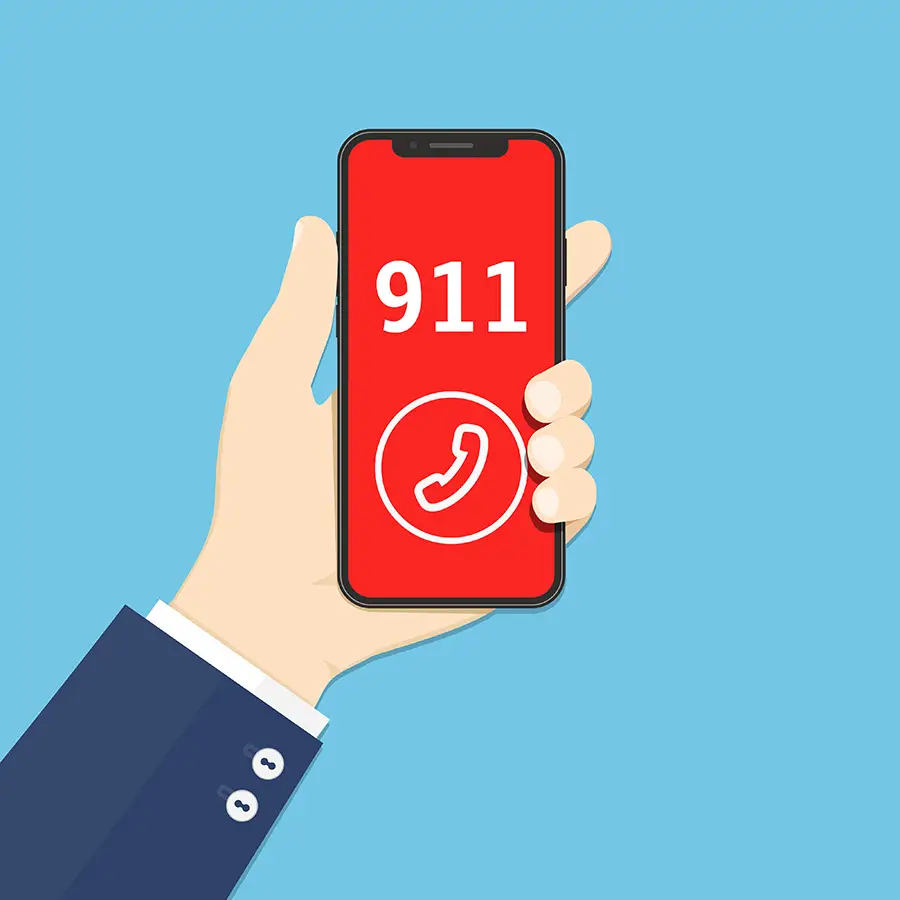
The first and most crucial step after experiencing a small kitchen fire is to ensure everyone’s safety. If the fire has not been completely extinguished, call 911 immediately and evacuate your home.
Once you’re out of harm’s way, assess any injuries or smoke inhalation symptoms that may have occurred during the incident.
If there are no immediate medical concerns, turn off all utilities in your home as soon as possible to prevent further damage or potential hazards. This includes gas lines, electricity sources, and water supplies.
Remember that even if the flames appear to be out entirely; it doesn’t mean there isn’t still a risk of re-ignition or other dangers such as structural damage from heat exposure.
Turning Off Utilities
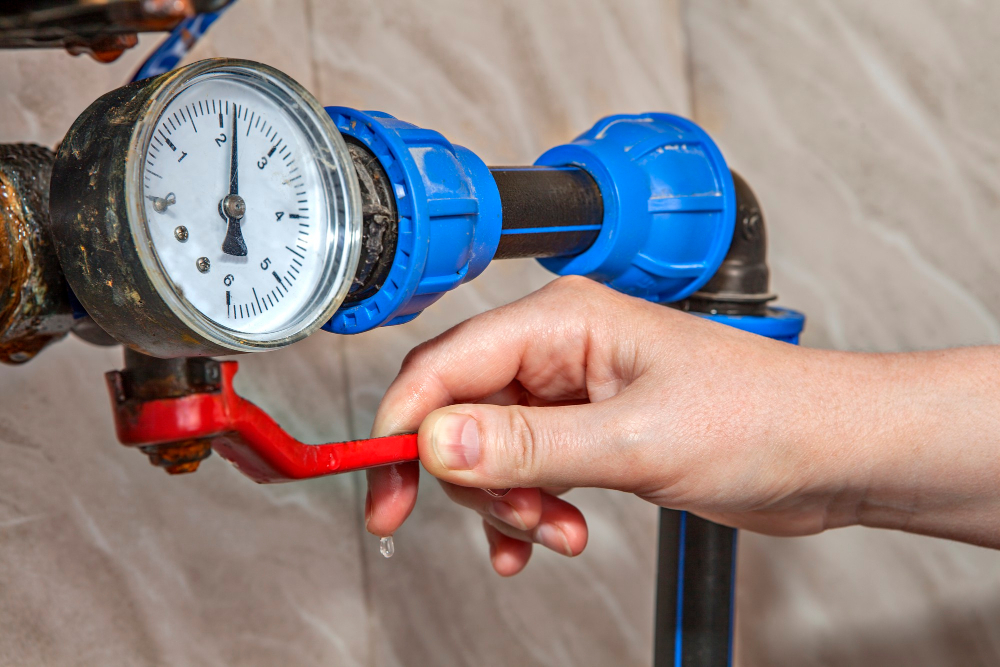
This step is crucial for ensuring safety and preventing further damage to your property. Turn off the gas, electricity, and water supply in your home immediately after experiencing a fire.
If you’re unsure how to do this or don’t feel comfortable doing it yourself, contact a professional electrician or plumber who can help you safely shut down these systems. Turning off the utilities will also prevent any electrical sparks from igniting another fire while cleaning up.
Assessing Fire Damage

This will help you determine what needs to be cleaned or replaced in your kitchen. Start by examining all surfaces, including walls, ceilings, floors, cabinets and drawers for any visible signs of damage such as charring or discoloration.
Check appliances like stoves and ovens for any warping or melting that may have occurred during the fire. Inspect electrical wiring and outlets for signs of heat exposure which could indicate potential hazards.
It’s important to note that even if there are no visible signs of damage on some items in your kitchen after a small fire incident; they might still need cleaning due to smoke residue buildup which can cause long-term health problems if not addressed properly.
If you’re unsure about how severe the damages are or how best to proceed with cleaning up after a small kitchen fire incident; it’s always advisable to seek professional help from experienced restoration companies who specialize in this type of work.
Ventilating the Area

Smoke and soot can linger in your home for days or even weeks after a fire, causing respiratory problems and unpleasant odors. The first step is to open all windows and doors to allow fresh air into the space.
If you have fans or an HVAC system, turn them on high speed to help circulate the air.
It’s also important to remove any items that may be holding onto smoke odor such as curtains, cushions or rugs from your kitchen area if they are not damaged by fire but affected by smoke damage.
If there are still strong smells lingering after ventilation efforts have been made then consider using an ozone generator which will neutralize odors at their source rather than just masking them with other scents like candles do.
Smoke and Soot Removal

Smoke particles can penetrate deep into surfaces, leaving behind unpleasant odors that linger long after the fire is out. Soot residue from burnt materials can also leave unsightly stains on walls and ceilings.
To remove smoke and soot effectively, start by opening all windows in your home to allow for proper ventilation. This will help dissipate any lingering smoke odor while also providing fresh air circulation throughout your space.
Next, use a vacuum cleaner with an upholstery attachment or a dry sponge to gently wipe down surfaces affected by soot residue. Avoid using water-based cleaning solutions as they may cause further damage or spread the stain around.
For stubborn stains caused by heavy soot buildup on walls or ceilings, consider hiring professional cleaners who have specialized equipment designed for this type of job.
Deodorizing the Space
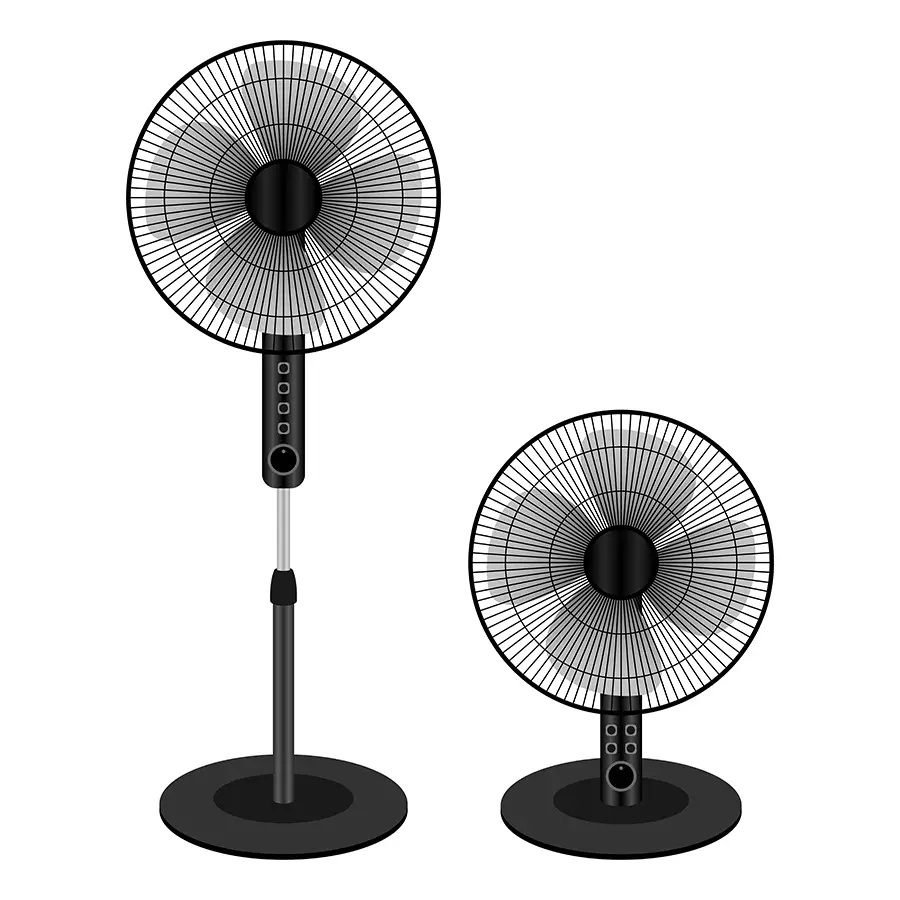
Deodorizing your space is an essential step in getting rid of these smells and ensuring that you’re breathing clean air. The first thing you should do is open all windows and doors to allow fresh air into the room.
You can also use fans or ventilation systems to help circulate the air.
Next, remove any items from your kitchen that may have absorbed smoke odors such as curtains, tablecloths, or cushions. These items will need thorough cleaning before they are safe for use again.
To deodorize surfaces in your kitchen like countertops or walls, mix one tablespoon of white vinegar with one cup of water in a spray bottle and apply it generously on affected areas.
Another effective way to eliminate stubborn smoke odor is by using baking soda. Sprinkle baking soda over carpets or upholstery then let it sit for several hours before vacuuming up thoroughly.
Discarding Damaged Items

Discarding damaged items is crucial for safety reasons as well as preventing further damage in your home. Items that have been exposed to smoke or heat may not only pose health risks but also emit unpleasant odors that are difficult to remove.
When discarding damaged items, it’s important to follow proper disposal guidelines set by your local waste management authority. Some materials such as batteries, chemicals, or electronics require special handling due to their potential hazards.
For food-related items such as canned goods or packaged foods stored near the fire source should also be disposed of even if they appear undamaged since they could have been contaminated with toxic fumes from the fire extinguisher used during firefighting efforts.
Remember always wear gloves when handling any item after a kitchen fire because soot residue can cause skin irritation and respiratory problems if inhaled.
Cleaning Salvageable Items
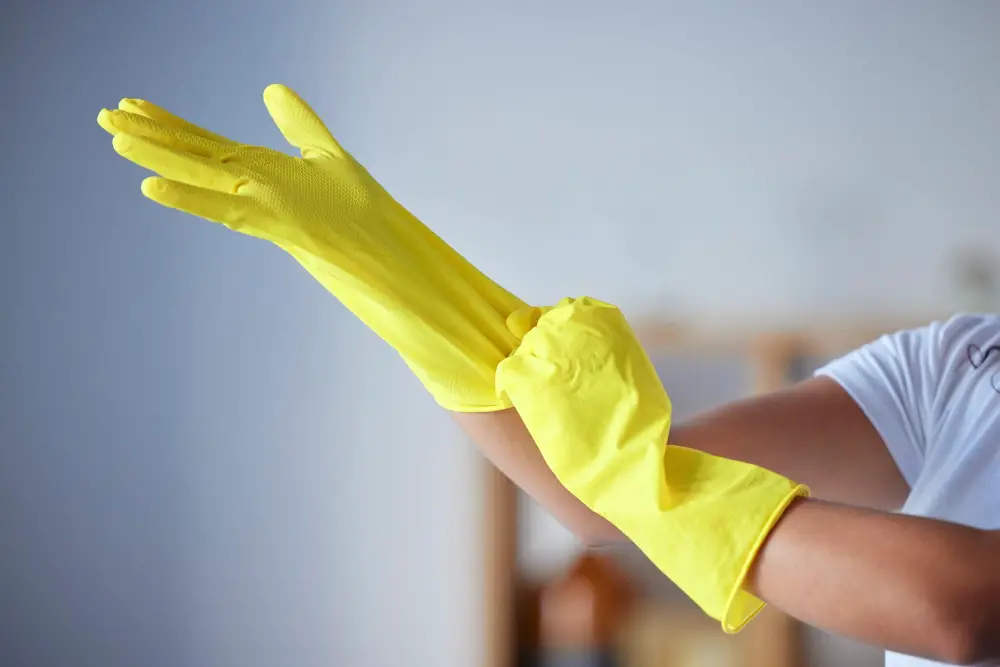
While some items may need to be discarded due to smoke or water damage, others may only require thorough cleaning. Salvageable items include dishes, utensils, pots and pans that were not directly exposed to flames.
To clean salvageable items after a kitchen fire:
1. Wear gloves: Protect your hands by wearing rubber gloves before handling any of the affected materials.
2. Remove loose debris: Use a soft-bristled brush or cloth to remove any loose soot or ash from the surface of each item.
3. Soak in warm water: Fill up your sink with warm water and add dish soap for extra cleaning power if necessary.
- Scrub gently: Use a non-abrasive sponge or cloth soaked in soapy water solution (or vinegar) to scrub each item gently until all visible residue is removed.
- Rinse thoroughly: Rinse off all soap suds under running tap-water
6. Dry completely: Dry them using paper towels, air dry rack etc.
Remember that porous materials like wood cutting boards should not be cleaned as they absorb smoke odor easily.
Wiping Down Cabinets and Drawers
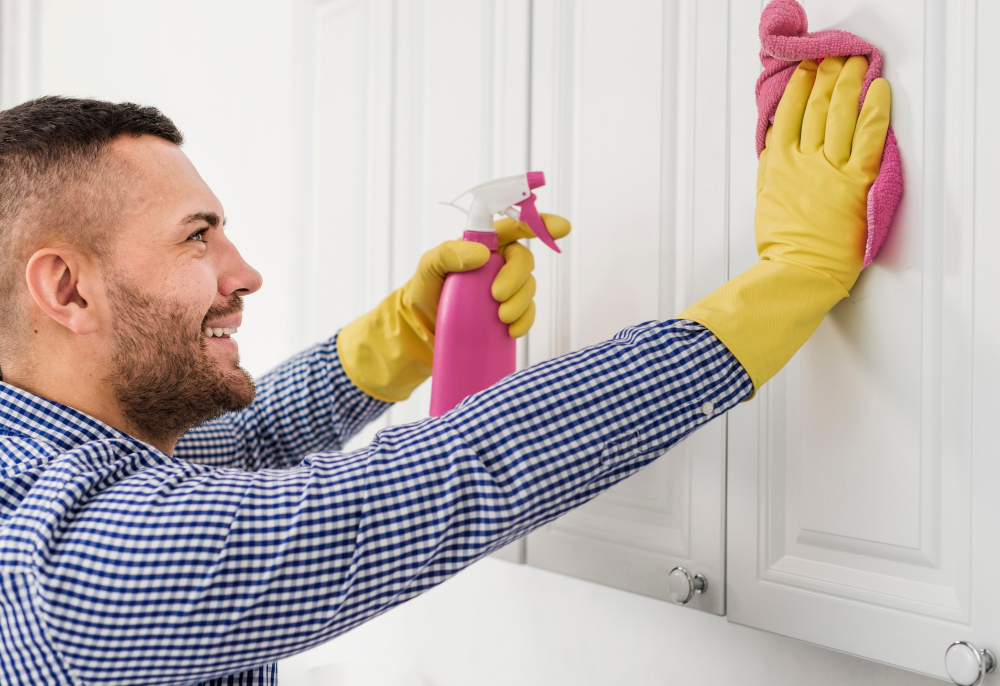
Cabinets and drawers are no exception. Even if they weren’t directly affected by the flames, smoke and soot can still leave behind residue that can be harmful to your health.
To begin cleaning cabinets and drawers, start by removing any items inside them. Wipe down each item with a damp cloth or sponge before setting them aside on a clean surface.
Next, use warm water mixed with mild dish soap to wipe down the interior of each cabinet or drawer. Be sure not to saturate the wood as this could cause damage over time.
For tougher stains or lingering odors, you may need to use an all-purpose cleaner specifically designed for wood surfaces. Always test any new product on an inconspicuous area first before applying it more broadly.
Once you’ve finished wiping everything down with soap and water (or cleaner), rinse off any remaining residue using another damp cloth or sponge before drying everything completely using paper towels or a dry towel.
Cleaning Kitchen Appliances
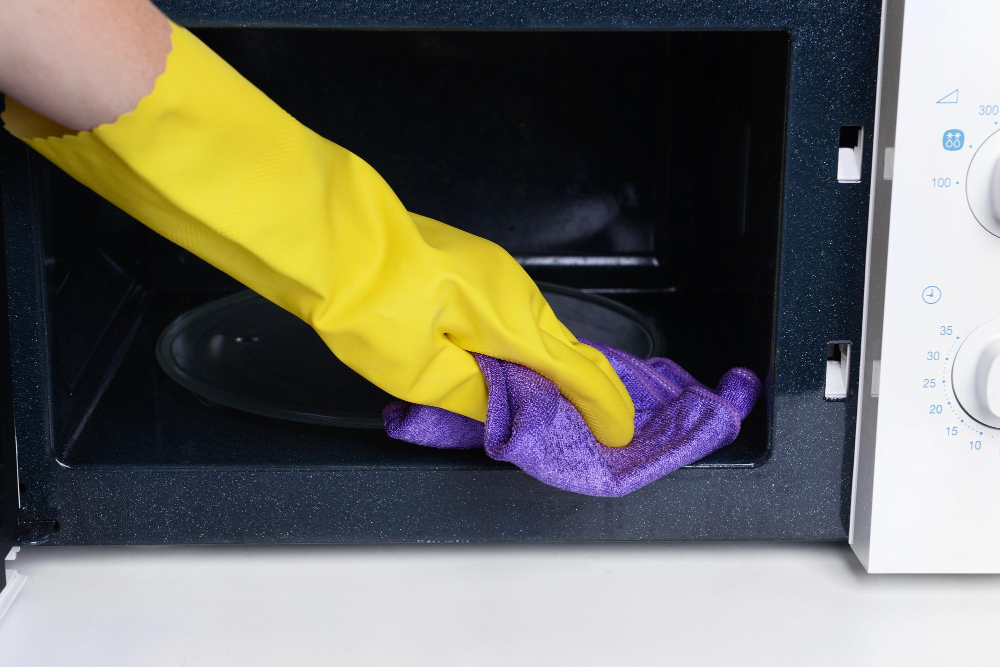
Smoke and soot can easily penetrate the surfaces of your appliances, leaving behind unpleasant odors and stains. Start by unplugging all electrical appliances in the kitchen before cleaning them.
For stainless steel or chrome-plated items such as toaster ovens, refrigerators or microwaves use a soft cloth with mild detergent solution to wipe down their surfaces gently. Avoid using abrasive cleaners that may scratch the surface of these items.
For non-electrical cookware like pots and pans that have been affected by smoke damage but are still salvageable, wash them with hot water mixed with baking soda until they’re free from any residue left after cooking.
If you find it challenging to remove stubborn stains on your appliance’s surface or inside its compartments like an oven cavity; consider hiring professional help for deep cleaning services.
Disposing Fire Extinguisher Residue
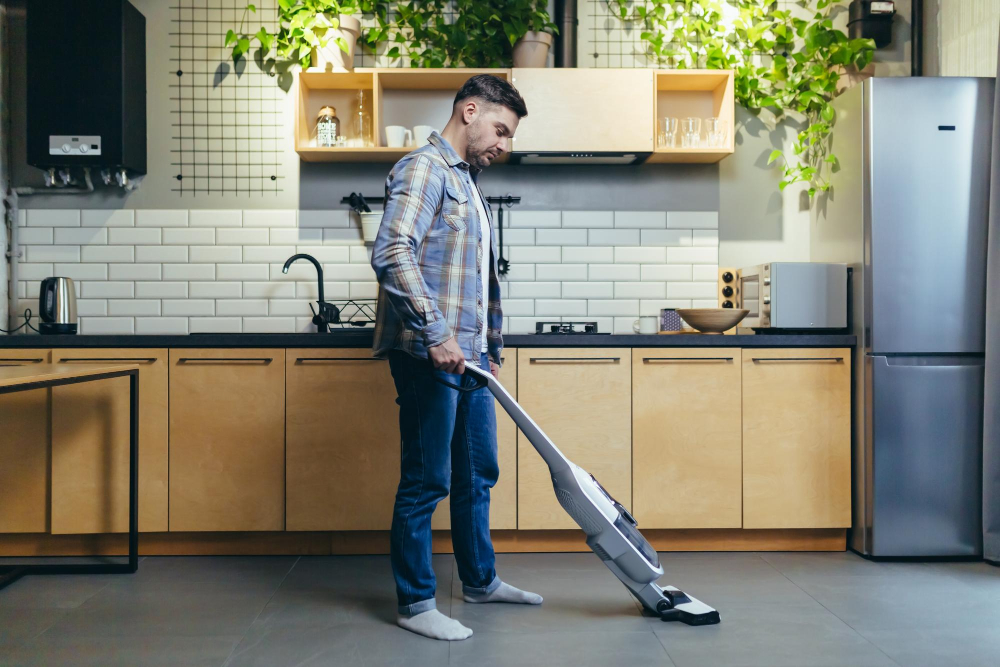
This residue can be harmful if not disposed of properly and can cause damage to your appliances and surfaces. To dispose of the residue, start by wiping away as much as possible with a damp cloth or paper towel.
Next, use a vacuum cleaner with HEPA filtration to remove any remaining powder or foam from the area. Be sure to empty the vacuum’s contents into an outside trash bin immediately after use.
It’s important not to simply wash away the residue with water since it could spread throughout your home’s plumbing system and cause further damage down the line.
Contacting Insurance Company

Your homeowner’s insurance policy may cover the cost of repairs and replacements for damaged items in your home. When you call, be sure to have all relevant information on hand, including the date and time of the fire, a description of what happened, and any photos or videos you took at the scene.
Your insurance agent will likely ask for an estimate of damages from a professional restoration company or contractor. They may also send out an adjuster to assess the damage themselves before approving any claims.
It’s important to note that not all types of damage are covered by every policy. For example, if your kitchen fire was caused by negligence (such as leaving something cooking unattended), it might not be covered under certain policies.
Be sure to read through your policy carefully so that you understand what is covered and what isn’t before contacting your insurer.
Hiring Professional Help
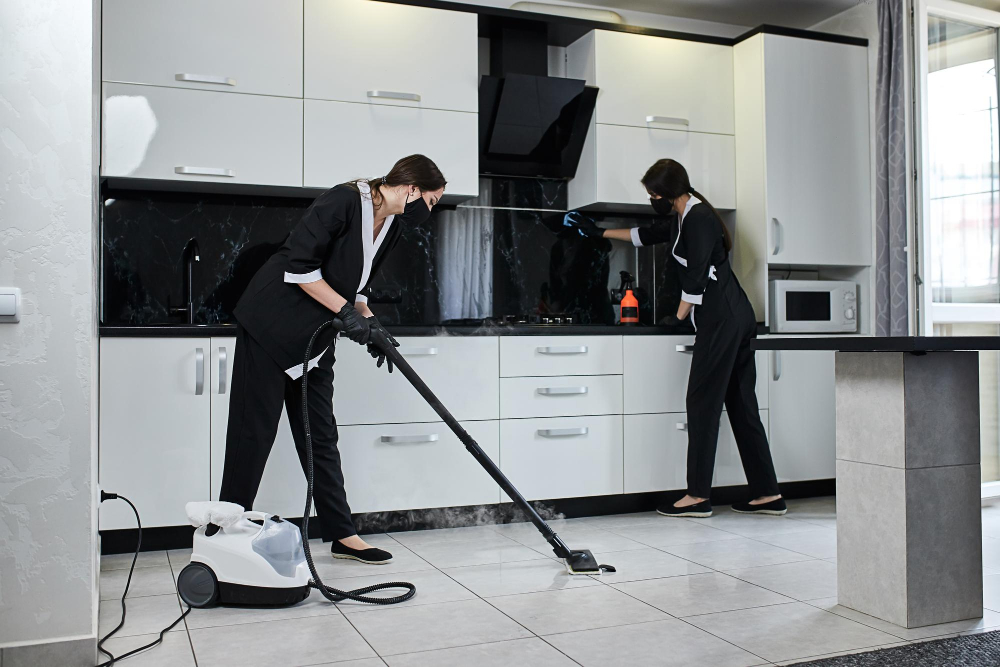
These experts have the necessary equipment and expertise to handle even the most severe cases of fire damage. They can help you assess the extent of damage, provide an estimate for repairs or replacements, and guide you through every step of the process.
When hiring a professional cleaning service after a small kitchen fire, make sure they are licensed and insured. Check their references online or ask for referrals from friends or family members who may have used their services before.
Professional cleaners will use specialized tools such as air scrubbers to remove smoke particles from your home’s air supply system effectively. They’ll also use industrial-grade dehumidifiers to dry out any moisture that may be present in walls or ceilings due to firefighting efforts.
Hiring professionals can save time while ensuring that your home is restored safely without further damaging it during cleanup efforts.
Repairing or Replacing Damaged Items

In this case, it’s important to dispose of these items properly and replace them as soon as possible. This includes any food or beverages that were exposed to smoke or heat during the fire.
For items that can be salvaged but require repairs, such as cabinets or countertops with burn marks, consider hiring a professional contractor who specializes in fire damage restoration. They will have the necessary tools and expertise to restore your kitchen back to its pre-fire condition.
If you decide to replace any damaged appliances like microwaves or ovens, make sure they are installed correctly and safely by a licensed electrician. It’s also essential not only for safety reasons but also for insurance purposes; if an improperly installed appliance causes another accident later on down the line – it could void your coverage.
Identifying Future Fire Hazards

One of the most common causes of kitchen fires is leaving cooking food unattended on the stove or in the oven. To prevent this from happening again, make sure you stay in the kitchen while cooking and set a timer as a reminder if necessary.
Another hazard is clutter around your stovetop or other heat sources such as toaster ovens and microwaves. Keep these areas clear of any flammable materials like paper towels, dishcloths, or plastic containers.
Electrical appliances can also be hazardous if not used correctly. Make sure all cords are intact and not frayed before plugging them into an outlet.
Avoid overloading outlets with too many devices at once.
Lastly, smoking indoors poses significant risks for starting house fires; therefore it’s best to smoke outside away from any combustible materials like curtains or furniture.
Preventing Kitchen Fires
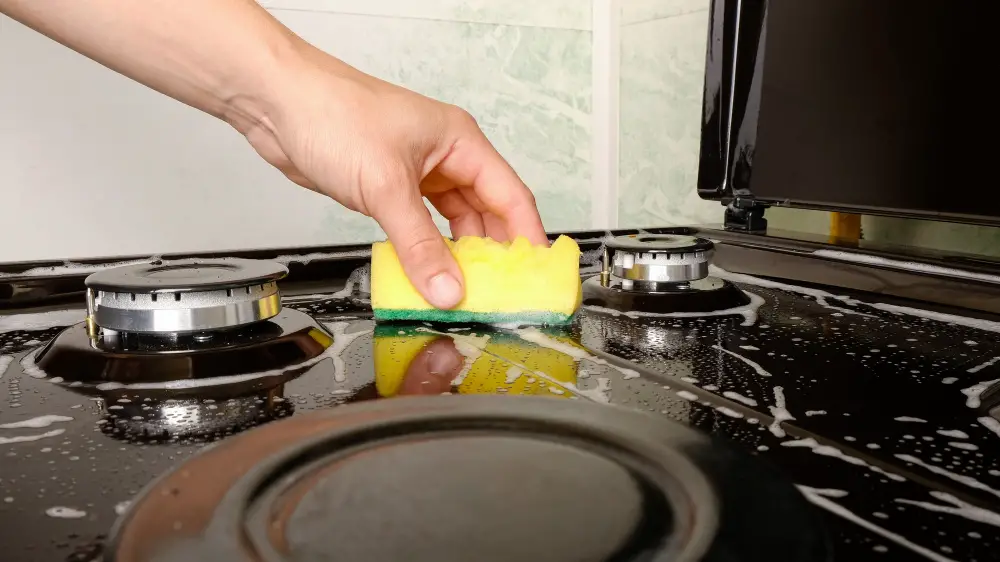
Here are some tips for reducing the risk of a kitchen fire:
- Never leave cooking food unattended.
- Keep flammable items away from heat sources.
- Clean your stove and oven regularly to prevent grease buildup.
- Use caution when cooking with oil or other flammable liquids.
- Install smoke detectors in your home and test them regularly.
By following these simple steps, you can significantly reduce the likelihood of experiencing a small kitchen fire and keep yourself and your loved ones safe.
Maintaining Fire Extinguisher
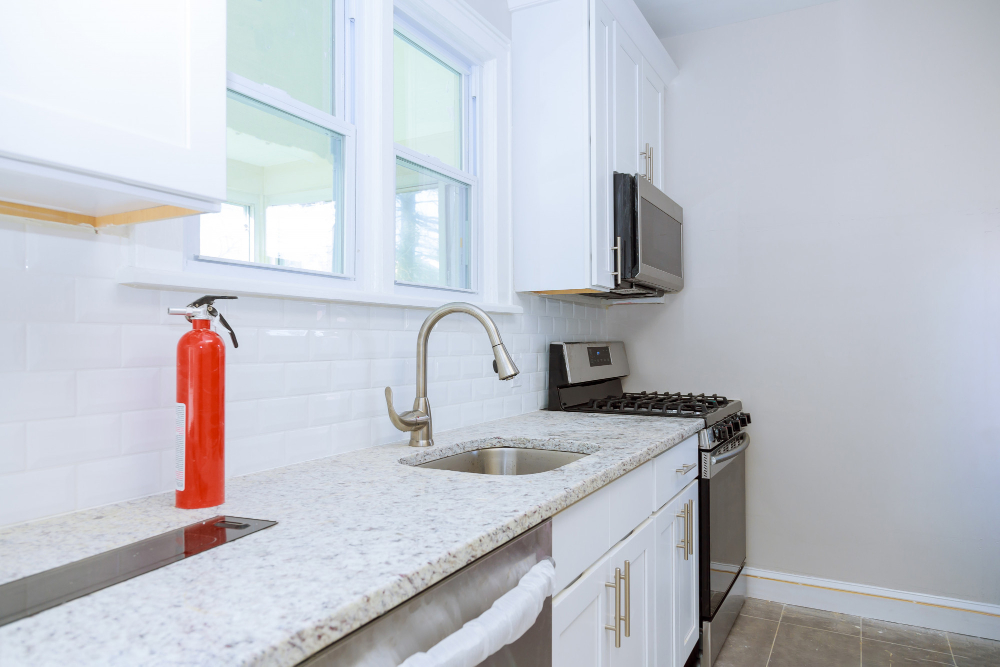
A well-maintained and fully charged fire extinguisher can be the difference between a minor incident and a major disaster. Therefore, you should check your extinguishers regularly to make sure they are ready for use when needed.
To maintain your fire extinguishers properly, follow these simple steps:
1. Check the pressure gauge: The pressure gauge on an extinguisher indicates whether it needs recharging or replacing.
2. Inspect the nozzle: Make sure there are no obstructions in the nozzle that could prevent proper discharge of the agent.
3. Shake it up: If you have a dry chemical powder type of extingusher (ABC), shake them once every month so that their contents do not settle at one place over time.
4. Keep track of expiration dates: Most types of portable firefighting equipment need replacement after 5-15 years depending on its type; therefore keep track if yours has expired or nearing expiry date.
Smoke Alarm Maintenance
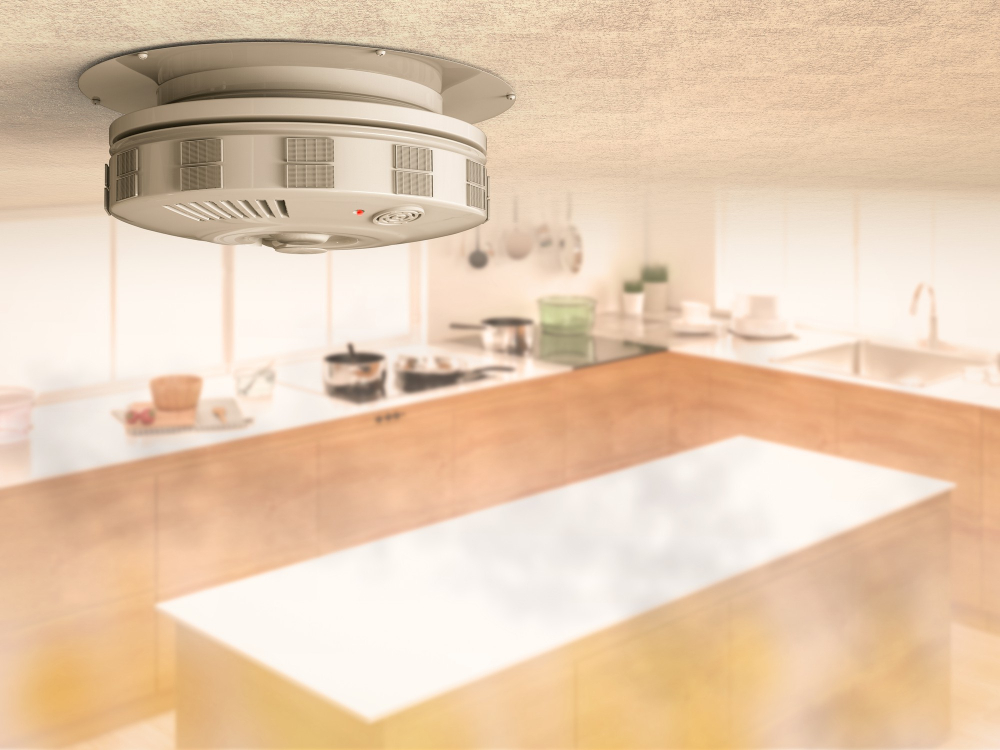
Smoke alarms should be installed in every room of your home, including the kitchen. They should also be tested regularly and have their batteries replaced at least once per year.
To test your smoke alarm, simply press and hold down the “test” button until you hear an audible beep or see a flashing light (depending on the type of alarm). If nothing happens when you press this button, it’s time to replace your batteries.
It’s also essential to keep smoke alarms clean by dusting them regularly with a soft brush or vacuum cleaner attachment. This will help ensure that they work correctly if there is ever an emergency in your home.
Planning an Escape Route

One of the most crucial aspects of this plan is creating an escape route that everyone in your household knows and understands.
Start by identifying all possible exits from your home, including doors and windows. Make sure each exit is easily accessible and can be opened quickly without any obstructions.
Next, create a map or diagram that shows the layout of your home with clear arrows indicating the escape routes.
It’s also vital to practice using these routes regularly so that everyone knows exactly what they need to do if there is ever an emergency situation. Conducting regular fire drills will help ensure that you’re prepared for any eventuality.
Managing Kitchen Fire Trauma

Even if the damage is minimal, it’s normal to feel shaken up and anxious in the aftermath. It’s essential to take care of your mental health as well as your physical space after a fire.
One way to manage trauma is by talking about what happened with loved ones or seeking professional help from a therapist or counselor. Don’t hesitate to reach out for support during this difficult time.
Taking steps towards preventing future fires can also provide peace of mind and reduce anxiety levels. This includes regularly checking smoke alarms, maintaining kitchen appliances properly, and having an escape plan in place should another emergency occur.
Remember that it’s okay not to feel okay after experiencing a small kitchen fire – but there are resources available that can help you cope with any lingering trauma or anxiety related to the incident.
FAQ
How do you clean up after a small kitchen fire?
To clean up after a small kitchen fire, mix 4-6 tbsp tri-sodium phosphate and 1 cup household cleaner or chlorine bleach with every gallon of warm water, then use a mild soap or detergent to remove soot and smoke from walls, floors, and furniture, wearing rubber gloves and rinsing surfaces with clear warm water before drying thoroughly.
What should I throw away after a kitchen fire?
After a kitchen fire, throw away any non-perishable food that has been affected by the fire, as the heat can activate bacteria and toxic fumes can cause damage even to sealed food.
Is it safe to sleep in a house after a small fire?
No, it is not safe to sleep in a house after a small fire due to the potential dangers posed by smoke.
What steps should be taken to assess the damage after a small kitchen fire?
Inspect the affected area, check for structural damage, examine appliances, assess air quality and odor, and document the damages for insurance purposes after a small kitchen fire.
How can I prevent future kitchen fires from occurring?
To prevent future kitchen fires, ensure to never leave cooking unattended, maintain cleanliness, and use proper electrical appliances.
Who should I contact for professional help in repairing the damage caused by a small kitchen fire?
For professional help in repairing the damage caused by a small kitchen fire, you should contact a fire damage restoration company.
